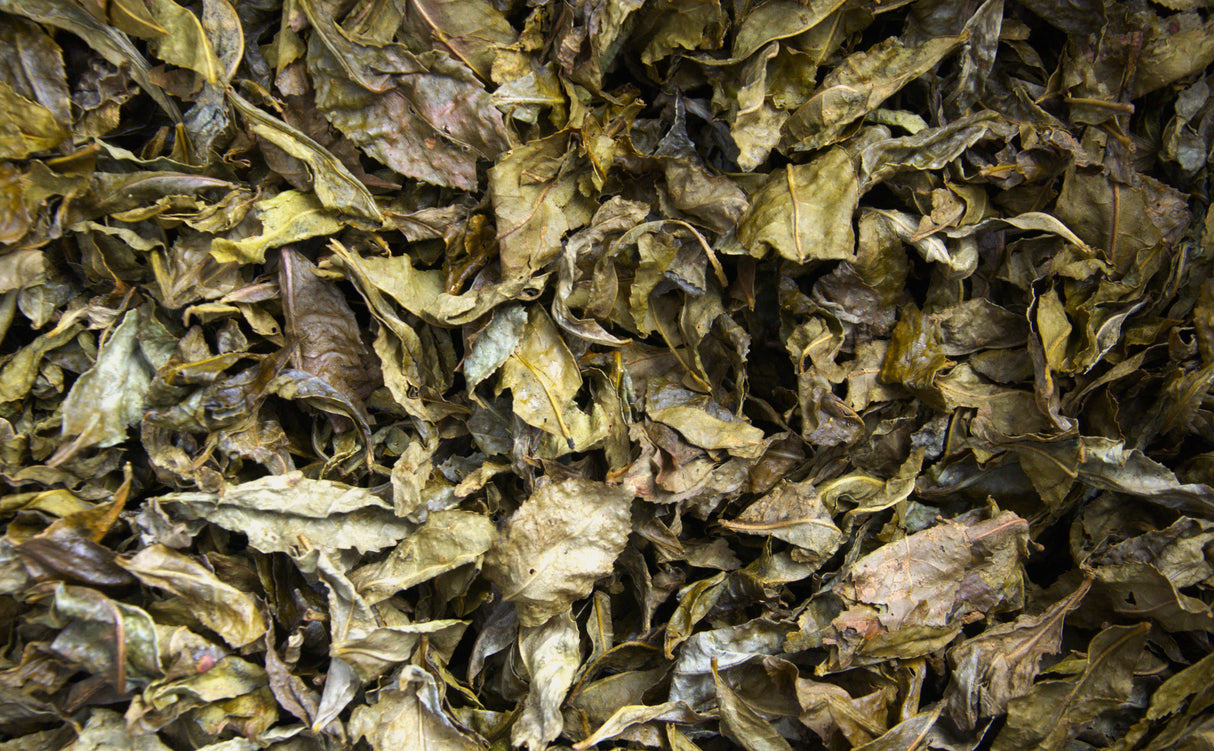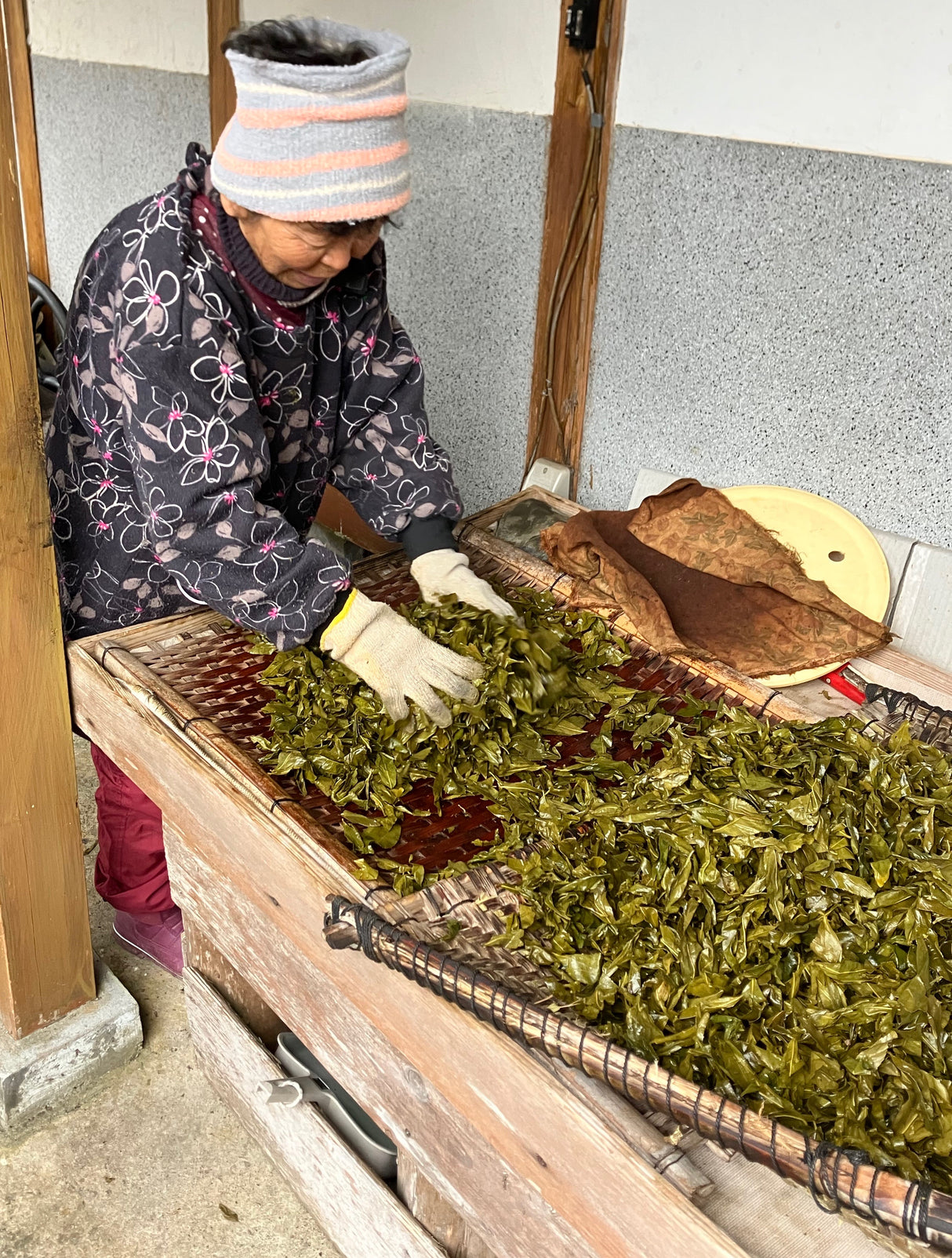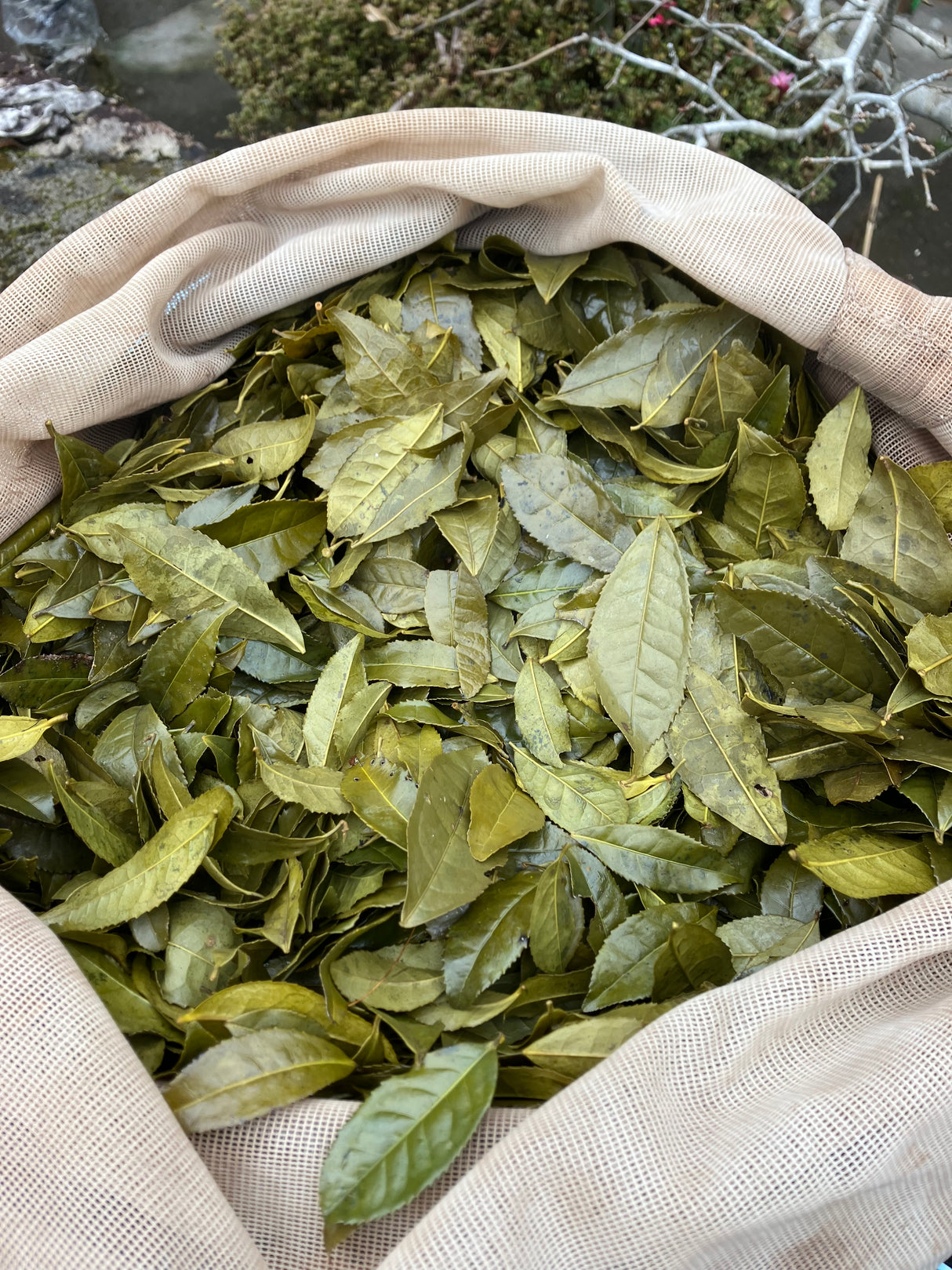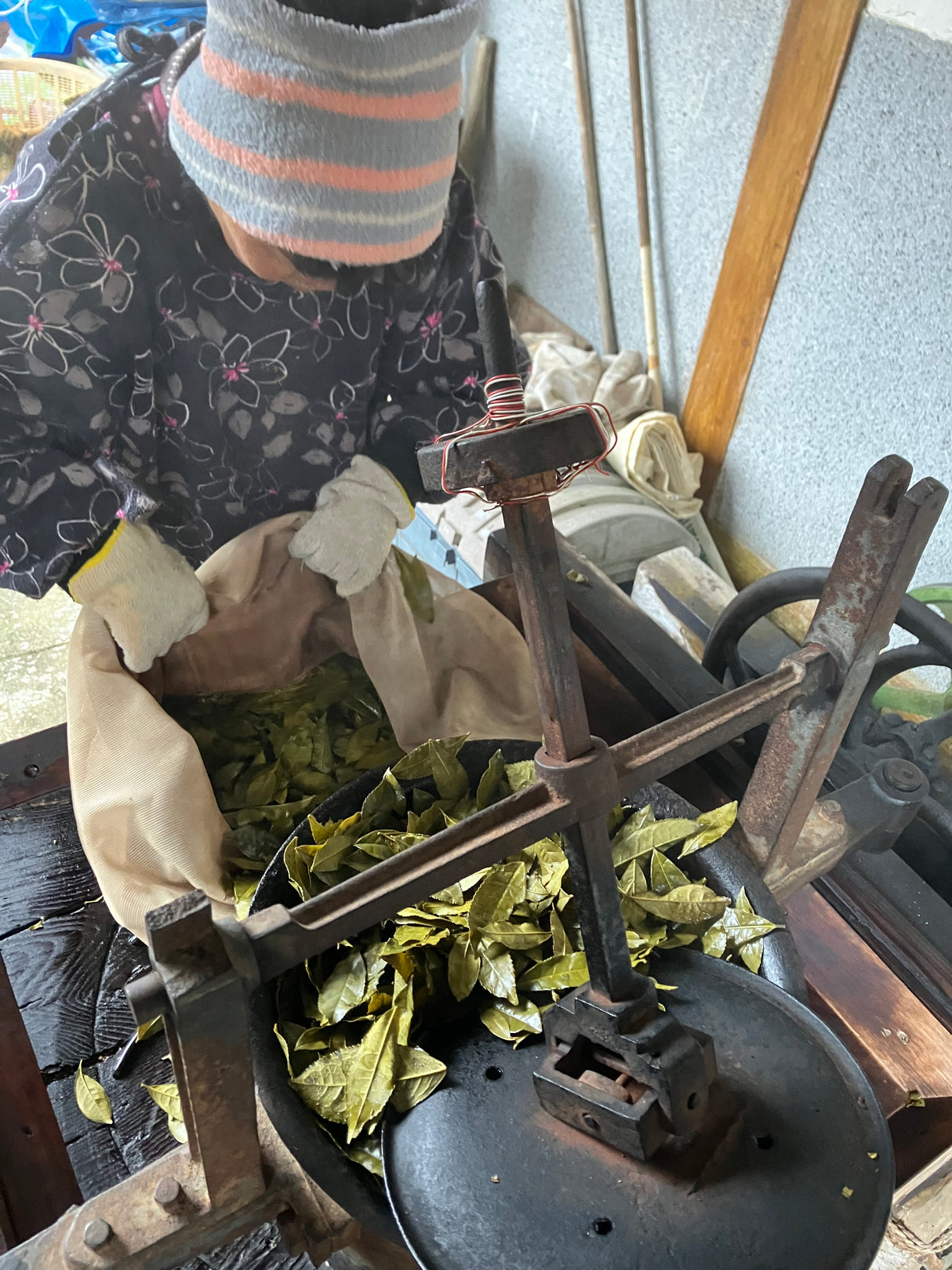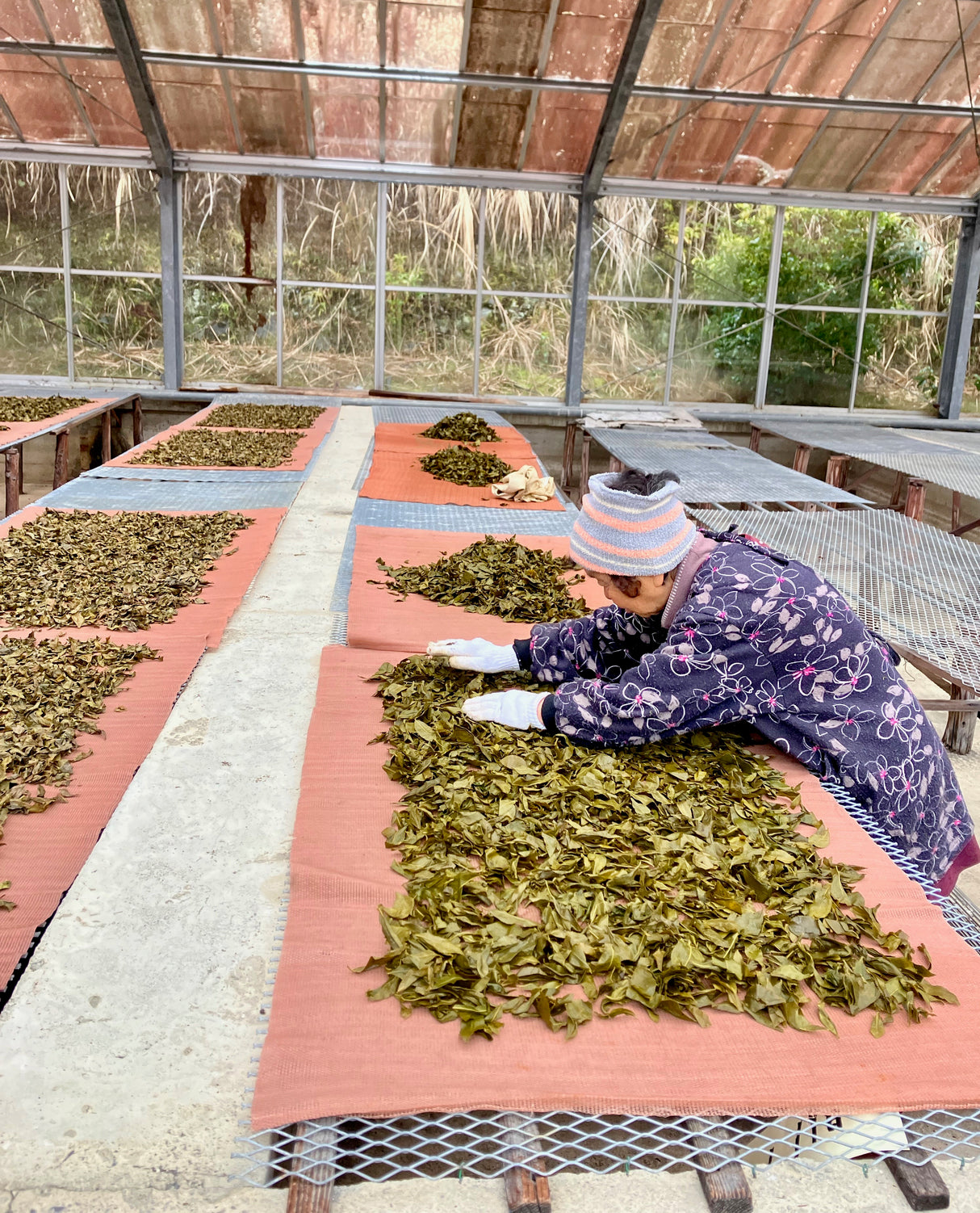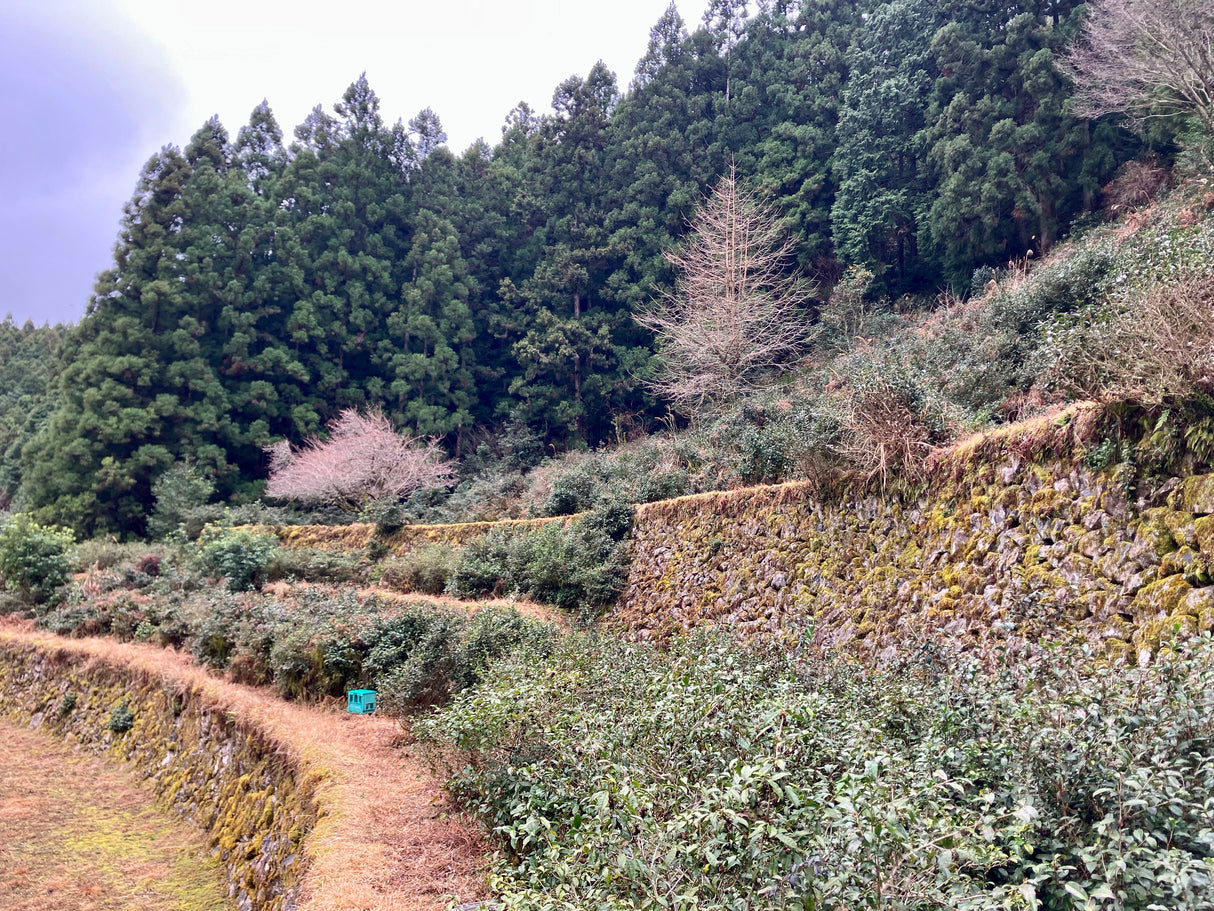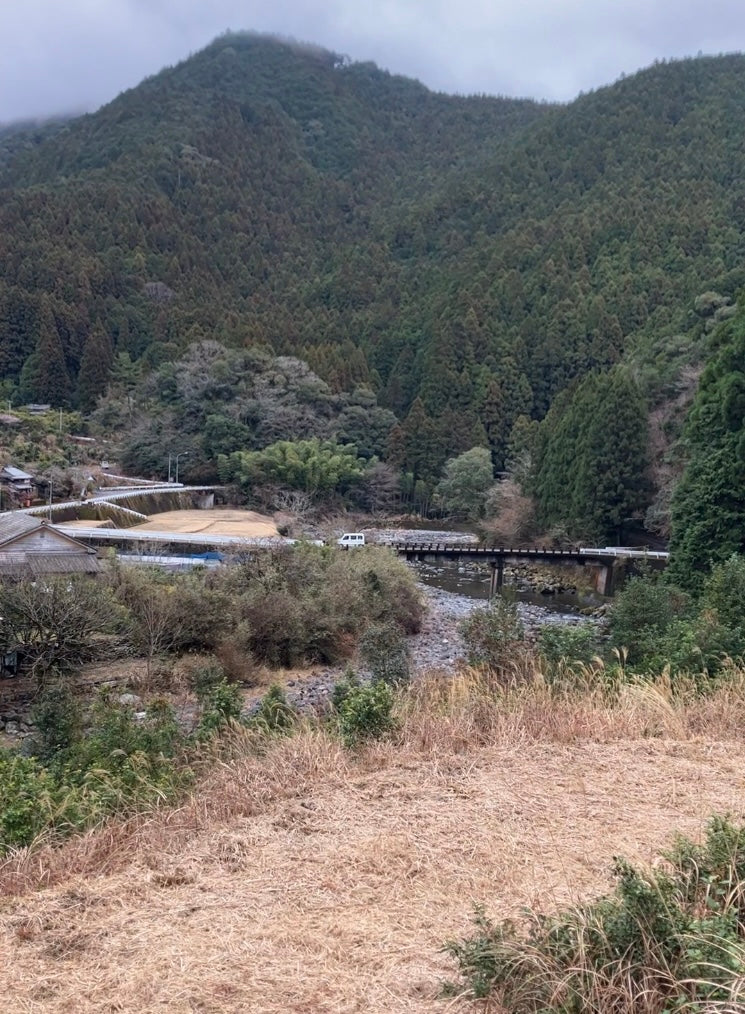#0834.T2 Shishikui Kancha from Tokushima Prefecture - Handpicked by Farmer Akemi Ishimoto
#0834.T2 Shishikui Kancha from Tokushima Prefecture - Handpicked by Farmer Akemi Ishimoto - 10g / 0.35 oz / Winter Harvest (Due to bulkiness extra shipping fee may be required even if order qualifies for a shipping promo rate. Please inquire if this is a concern.) <-- Currently not in stock. Order now for immediate procurement (2-3 week delay). If larger size available, repacking takes a week. If "sold out", please inquire for more accurate availability.
Delivery and Shipping
Delivery and Shipping
Shipping fees vary by country, courier, and method. Place items into your inventory and go to the CART page to see the shipping estimate calculator. For some countries, we may need to manually calculate fees after purchase.
YUNOMI.LIFE'S DELIVERY GUARANTEE: We guarantee delivery for all orders shipped by airmail with a tracking number. (Conditions apply. Exceptions when notified.) Occasionally, orders may require additional customs processing for import. We will aid you to the fullest extent of our ability. If your order does not arrive within ONE month from shipment due to no fault of your own, we will replace or refund your order at no extra cost. We reserve the right to refuse shipment if we think delivery to your address may be difficult. This guarantee does not apply if recipient neglects or refuses to pay customs fees & import taxes, neglects to retrieve an order held at a post office or distribution center, or if the order is not deliverable due to a wrong address. Yunomi.life's Delivery Guarantee does not apply to wholesale purchases.
Kancha from the mountain village of Kuo, Shishikui in Tokushima Prefecture, is a long-loved bancha, a folk tea that is made specifically in the South of Tokushima Prefecture.
For decades, tea farmer Akemi Ishimoto has been trying to preserve this regional bancha. She founded the Shishikui Kancha Production Association roughly 35 years ago to bring together farmers in the region to help with kancha harvesting and production.
In this region, they have always harvested mature and coarse tea leaves in the winter time as opposed to a spring harvest because the people believe it makes for more delicious and mellow tea.
Due to depopulation and aging; today, Kuo village only has a population of about 10. Now, at 87 years old (in 2024), Akemi-san is the only one who is keeping the kancha tradition alive. Due to the hard labor of tea harvesting and processing, she is the only one that is making the tea from start to finish (e.g., her friends, elementary school children, and tea lovers may help her with harvesting here and there).
Akemi-san says that she has never met a person who loves kancha more than herself and she also says every year that this will be her last year making kancha.
Kancha Processing
As with many banchas, kancha is made from mature, large leaves. What makes kancha unique is that the leaves are harvested in the cold winter months. The way Akemi-san’s kancha is made follows this process:
- She handpicks mature winter tea leaves (about 10 cm in length) starting on January 1st (and makes multiple batches until March 10).
- She then boils the leaves for 25 minutes to soften them and stop oxidization.
- The leaves are then massaged first by machine then hand-rolled by Akemi-san for the finishing touch (note: previously, it was all hand-rolled).
- Then, the leaves are left in a barrel overnight.
- They are then brought to Akemi-san’s greenhouse (across the river), removed from the barrel, and spread out to dry for 2-5 days depending on the weather.
- Lastly, the leaves are taken outside to sundry on sunny days. Akemi-san says the last sun drying step is a very important in her kancha making process. There is something special about receiving energy from the sun.
Product Info
- Ingredient: Green tea
- Harvest: Cold winter months (January 1st ~ March 10th).
- Region: Kuo Village, Shishikuicho, Tokushima Prefecture
- Cultivated: without use of pesticides
- Region: Kuo Village, Shishikui, Tokushima Prefecture
-
CultivarZairai
-
HarvestWinter Harvest
-
RegionTokushima - 徳島県
-
Vendor TypeFarm, Family Business
Payment & Security
Payment methods
Your payment information is processed securely. We do not store credit card details nor have access to your credit card information.

